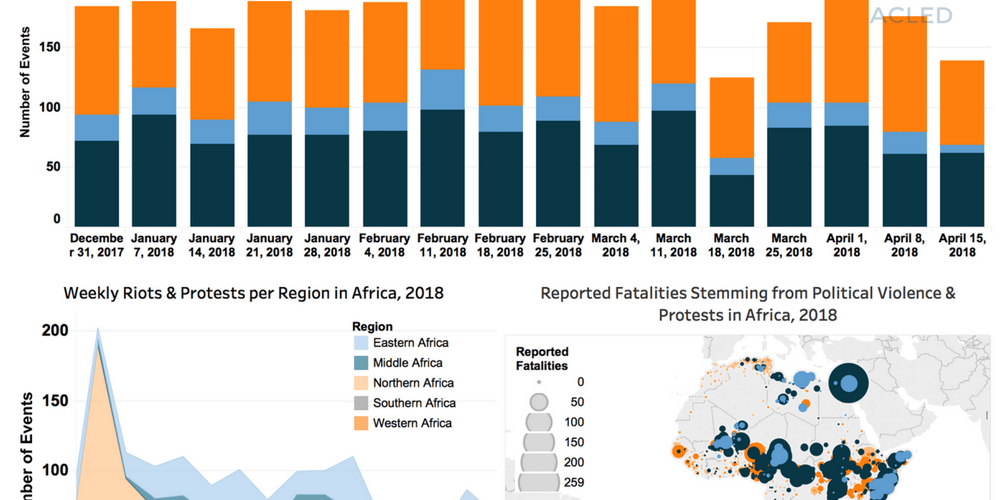Key developments in Africa from April 16th-23rd relate to the insurgencies in South Sudan and in the Democratic Republic of Congo (DRC), the inter-ethnic violence in southern Ethiopia, the unabated repression in Burundi and the growing popular discontent in South Africa, Zimbabwe and Togo.
In Burundi, the Imbonerakure youth militia are leading a nationwide cycle of repression and intimidation ahead of the May 17th Constitutional referendum. Hundreds of civilians and activists from the Movement for Solidarity and Democracy (MSD), National Forces of Liberation (Rwasa Faction) (FNL-R) and Amizero yAbarundi have been beaten, arrested, and some killed across the country. The Imbonerakure are imposing curfews to control people’s movements at night – most recently in Kirundo province on 10th and 17th of April. On April 18th, the lower house of Burundi’s parliament voted to allow the security forces to conduct night raids without a search warrant. Therefore, this violence is set to continue, especially as the opposition parties begin their campaigning for the vote early May (campaigning “No” to abolishing term limits has been declared illegal). The tense climate is further compounded by regular grenade attacks by unknown militants on busy civilian areas.
In South Sudan, clashes between the government and the Sudanese People’s Liberation Army/Movement‐In Opposition (SPLA-IO) led by Riek Machar have been ongoing since April 12th around Bentiu in Unity state. This follows several weeks of relatively low levels of clashes between the two armies. The upsurge may be linked to the upcoming High-Level Revitalization Forum peace talks, as the parties seek to secure gains to improve their leverage at the negotiations table. It is expected that new militant groups may emerge to gain a seat at the table (such as former head of the Military Paul Malong’s new militia- the South Sudan United Front (SSUF)).
In the DRC, after a few weeks of low activity by the Allied Democratic Forces (ADF), clashes resumed between the militants and the FARDC supported by MONUSCO air raids in Beni territory. There were at least four instances of clashes between April 14-20th . Reports have pointed to ADF moving in small satellite groups around the region and launching attacks where possible to counter the increased joint activity by the FARDC and MONUSCO forces.
Ethiopia has continued to see high levels of activity over the past weeks. Last week, clashes flared up in the south between the Gedeo and the Guji ethnic groups, leaving dozens of people dead and forcing up to 100,000 people into displacement. At the same time, the Ethiopian military forces are maintaining their repression in the Oromia region with continued reports of civilian killings. The Somali regions’ Liyu police was involved in several cross-border attacks into Oromia last week: in Moyale, a border town between Ethiopia and Kenya, they were blamed for throwing a grenade that left three killed and 50 injured.
Demonstrations are notable in several areas. In South Africa, rioters clashed with the police forces in Mahikeng in the North West province over the performance of the province’s Premier (governor) for at least three days, from April 18th. President Ramaphosa cancelled a trip to respond to the unrest, revealing its potential to escalate. In Zimbabwe, social movements are multiplying before the July presidential elections: last week, nearly 15,000 nurses responded to a nationwide strike action to protest their salaries, to which the government responded by firing all of the nurses. Finally, in Togo, clashes erupted between anti-government demonstrators and police in a number of places on the 11th, 12th and 14th of April, leaving at least one person killed (in the capital Lome), hundreds injured and more than 200 arrested. Further marches are planned in the coming days as the Togolese opposition supporters seek the respect of the 1992 Constitution.

AfricaAnalysisCivilians At RiskCurrent HotspotsRemote ViolenceRioting And ProtestsViolence Against Civilians






